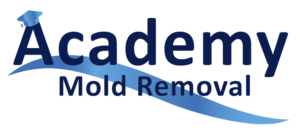Attic Mold Removal: How to Detect and Eliminate Mold in Your Attic
September 21, 2024Why Attic Mold Removal is Crucial for Your Family’s Health
September 21, 2024Attic mold is a hidden threat that many homeowners may overlook until it’s too late. Not only can it cause significant structural damage, but it can also pose health risks to your family. To avoid costly repairs and protect your home, learning about attic mold removal is essential. This comprehensive guide will walk you through everything you need to know about identifying, preventing, and eliminating mold in your attic.
Why Is Attic Mold a Serious Problem?
Attics are prone to mold growth due to their enclosed spaces and tendency to trap moisture. Poor ventilation, roof leaks, and high humidity levels create the perfect environment for mold to thrive. If left untreated, attic mold can lead to severe structural damage, affect indoor air quality, and cause respiratory issues for those living in the home. This makes attic mold removal a top priority for homeowners.
How to Identify Mold in Your Attic
Before you can begin attic mold removal, it’s important to detect the problem. Mold in the attic typically appears as black, green, or white patches on wood surfaces, insulation, or other materials. A musty smell is also a common sign of mold growth. Regular attic inspections, especially after storms or during the rainy season, can help you catch mold early.
Steps for Effective Attic Mold Removal
Once you’ve identified mold, taking quick action is essential to prevent it from spreading. Follow these steps for thorough attic mold removal:
- Find and Fix the Source of Moisture: Mold needs moisture to grow, so addressing the root cause of the dampness is key. Check for roof leaks, ensure proper insulation, and improve ventilation in your attic by installing vents or using fans to keep air circulating.
- Clean Affected Areas: Use mold-specific cleaning agents like bleach, vinegar, or commercial mold removers to clean affected areas. For smaller infestations, scrubbing with a brush can suffice, but larger outbreaks may require professional help.
- Remove Contaminated Materials: In some cases, you may need to remove and replace mold-infested materials such as insulation or drywall. Be sure to safely dispose of contaminated items to avoid spreading mold spores.
- Wear Protective Gear: When performing attic mold removal, it’s crucial to protect yourself from mold exposure. Wear a mask, gloves, and protective clothing to reduce the risk of inhaling harmful spores.
How to Prevent Future Mold Growth
Prevention is just as important as attic mold removal. To avoid recurring issues, focus on moisture control:
- Improve Ventilation: Make sure your attic has proper ventilation to allow air to flow and prevent condensation.
- Control Humidity Levels: Keep your attic dry by using a dehumidifier if necessary, and regularly check for leaks or water damage after storms.
- Seal Cracks and Gaps: Ensure your attic is properly sealed, particularly around windows, doors, and the roofline, to prevent moisture intrusion.
When to Call in Professionals
While small mold problems can often be handled by homeowners, extensive mold growth may require professional intervention. Mold remediation specialists have the expertise and equipment to handle large-scale attic mold removal safely and effectively, ensuring the problem is fully eradicated.
By following this complete guide to attic mold removal, you can protect your home and family from the risks associated with mold. With early detection, effective removal, and proper prevention, you’ll be able to keep your attic mold-free for years to come.
